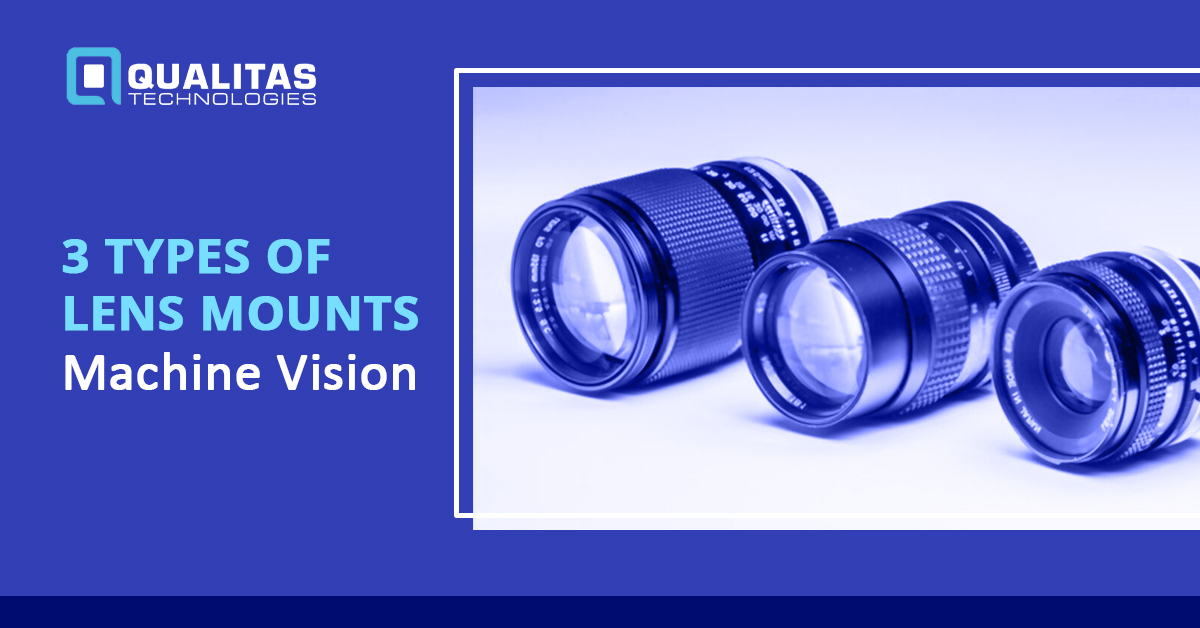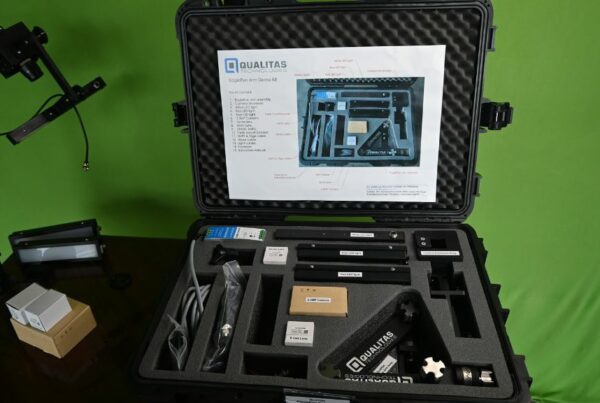
Introduction
All image acquisition systems share a supreme objective, that is, to capture stable and meaningful optical data. Despite the tremendous potential of machine vision systems to spot the smallest of errors and increase the net throughput dramatically, their performance is heavily dependent on the image quality that they receive. In other words, inconsistent or poor visual data lowers the machine vision system’s accuracy considerably. Needless to say, getting the lens and the related parameters correct is crucial to the vision system’s accuracy, speed, and reliability.
Several parameters affect lens selection, some of which are:
- Working distance: Working distance is the distance from the face of the camera to the object’s visible face.
- Field of view: Field of view is the net area enclosed by the object of interest.
- Camera pixel size: Just as the name suggests, it is the size of the camera pixels.
- Resolution: Resolution can be calculated as the dimension of the minimum feature of interest.
- Depth of field: Depth of field is the distance between the closest and the farthest objects that are in acceptably sharp focus.
- Lens mount
In this blog post, we’ll majorly discuss what a lens mount is, the types of lens mounts, and their characteristics.
Also, Read PARAMETERS FOR LENS SELECTION
What is a Lens Mount?
In order to attach a lens to a camera, we need some kind of a mounting system that holds the lens in place. Loose lenses can damage the clarity and reproducibility of images and, therefore, create bottlenecks in machine vision workflows. Lens mounts are an effective solution to this problem. A lens mount is responsible for the mechanical stability of the lens. In the next section, we discuss the various kinds of lens mounts used in machine vision.
Types of Lens Mounts
To ensure proper compatibility between different types of lenses and cameras, a number of standard lens mounts have been defined. Since we will be limiting our discussion to area scan cameras, the three types of standard lens mounts are the following:
- C-Mount
C-mount is the most commonly used type of lens mount in machine vision systems. It benefits from a wide variety of lenses. The C-mount connection is an imperial thread with a one-inch diameter and a pitch of 32 threads for every inch. This means that it is virtually analogous to a metric thread M25.5 x 0.75 mm.
What differentiates a C-mount connector from a CS-mount connector is its back focal distance. The back focal distance in a C-mount connector is fixed to 17.526 mm, which means that it is exactly 5 mm longer than the back focal distance of a CS-mount connector. A CS-mount lens cannot be used in a C-mount connector. However, a C-mount lens can be used in a CS-mount connector by inserting a CS-mount adapter (5 mm spacer ring) between the lens and the camera.
Since it has a relatively smaller diameter of only one inch (25.4 mm), a C-mount connector is not apt for large sensors like the ones used in high-resolution cameras or line scan cameras.
- CS-Mount
As we discussed in the previous section, a CS-mount is similar to a C-mount but with only a 5 mm shorter flange focal length. Just as a C-mount, a CS-mount also has an imperial thread of a one-inch diameter and the same pitch of 32 threads per inch.
The back focal distance of the CS-mount connector is 12.526 mm, exactly 5 mm smaller than that of a C-mount connector. This particular specification makes it impossible to use a CS-mount lens on a C-mount camera.
CS-mounts are more commonly found in CCTV cost-sensitive applications. These are not so prevalent in machine vision applications. Since it has the same relatively smaller diameter of 1 inch (25.4 mm), a CS-mount connector too is unsuitable to be used in high-resolution cameras and line scan cameras.
- F-Mount
Nikon’s SLR camera lens mount system is commonly known as the F-mount. The F-mount is commonly used for large matrix sensors and line scan cameras because of its large format. The F-mount lens connector is extensively used in scientific, imaging, and machine vision applications, particularly for high-resolution and line scan cameras. The F-mount has been in production for over 50 years, making it the only SLR lens mount to accomplish this milestone.
Also, Read CAMERA FUNDAMENTALS IN MACHINE VISION
Conclusion
Getting the parameters affecting lens selection right is critical for the optimal performance of machine vision systems. In this post, we gained a deeper understanding of one such parameter, i.e., lens mounts. We also discussed the features and applications of each type of lens mount.
Register For Our Upcoming Free Webinar






very interesting, good job and thanks for sharing such a good information